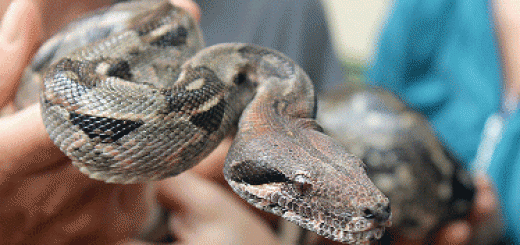Climate Change Might Steal Nutrients from Food Crops
2017 was a good year for worrying about nutrient losses that might come with a changing climate.
The idea that surging carbon dioxide levels could stealthily render some major crops less nutritious has long been percolating in plant research circles. “It’s literally a 25-year story, but it has come to a head in the last year or so,” says Lewis Ziska, a plant physiologist with the U.S. Agricultural Research Service in Beltsville, Md.
Concerns are growing that wheat, rice and some other staple crops could, pound for pound, deliver less of some minerals and protein in decades to come than those crops do today. In 2017, three reports highlighted what changes in those crops could mean for global health. Also this year, an ambitious analysis made an almost-global assessment of sources of selenium, a trace element crucial for health, and warned of regions where climate change might cut the element’s availability.
Crop responses to rising CO2 might affect nutrition and health for billions of people, Ziska says, but the idea has been difficult to convey to nonspecialists. One complication is that though plants certainly need CO2 to grow, providing more of it doesn’t mean that all aspects of plant biology change in sync. In hoping for a farming bonus, Ziska warns, people often overlook the disproportionate zest of weeds. An outdoor experiment wafting extra CO2 through a forest has already shown, for example, that poison ivy grew faster than the trees.
In the 2017 Annual Review of Public Health, Samuel Myers of Harvard University and colleagues wrote that global shortfalls in human nutrition are already “staggering.” More than a billion people aren’t getting enough zinc now, raising risks of premature birth, stunted childhood growth and weak immune systems. To estimate future shortfalls, Myers and colleagues turned to nutrient data they published in 2014 in Nature.
That report compared staple crops grown in various outdoor setups on three continents at either ambient or enhanced atmospheric CO2 concentrations. Fancy research piping boosted ambient levels of 363 to 386 parts per million to 546 and 584 ppm. (A moderate scenario puts late-century levels at 580 to 720 ppm.)
Decreases in zinc concentrations, including in rice and wheat, could plunge an additional 150 million to 200 million people into zinc deficiency, the researchers calculate. Likewise, predicted declines in iron content in some grains and legumes look worrisome for countries with anemia rates already higher than 20 percent, such as India and Algeria, Myers and colleagues reported in August in GeoHealth. Such high-anemia nations have a lot of people especially at risk, including 1.4 billion young children and women of childbearing age.
An expanded set of experiments suggested that protein content in rice and wheat could sink by roughly 8 percent, Myers and colleagues wrote in the August Environmental Health Perspectives. Thus, rising CO2could add some 148 million people worldwide to the roughly 1.4 billion expected to be short of protein by 2050.
Also this year, grazing cattle joined the list of animals facing a protein downturn in their food. (Ziska and colleagues raised the issue for bees in 2016.) For cattle, 22 years and more than 36,000 fecal measurements suggest that plants on U.S. grazing lands have grown poorer in protein, ecologist Joseph Craine of Jonah Ventures, in Boulder, Colo., and colleagues reported April 10 in Environmental Research Letters. For every kilogram of plants that cattle ate in 2015, there were 10.6 grams less protein than there had been 22 years before. The yearly loss is equivalent to the protein available in $1.9 billion worth of soy meal — and rising CO2 is a possible culprit.
Plant reactions will be varied and complex, Ziska points out. An Artemisia plant’s anti-malarial compound, artemisinin, can get more concentrated as CO2 increases, possibly good news for plant-based medicine. But the mix of urushiols, oils that put the itch in poison ivy, can become more allergy-provoking when exposed to extra CO2, a test suggested. Ziska is now looking into how much caffeine will turbocharge future coffee beans.
Whatever the changes, concern is growing, says mathematical biologist Irakli Loladze of Bryan College of Health Sciences in Lincoln, Neb. He, Ziska and nine coauthors included nutritional erosion in the 2016 U.S. scientific assessment of the impacts of climate change on human health. To raise the public profile of the issue, though, Myers says, “We have a ways to go.”















Recent Comments